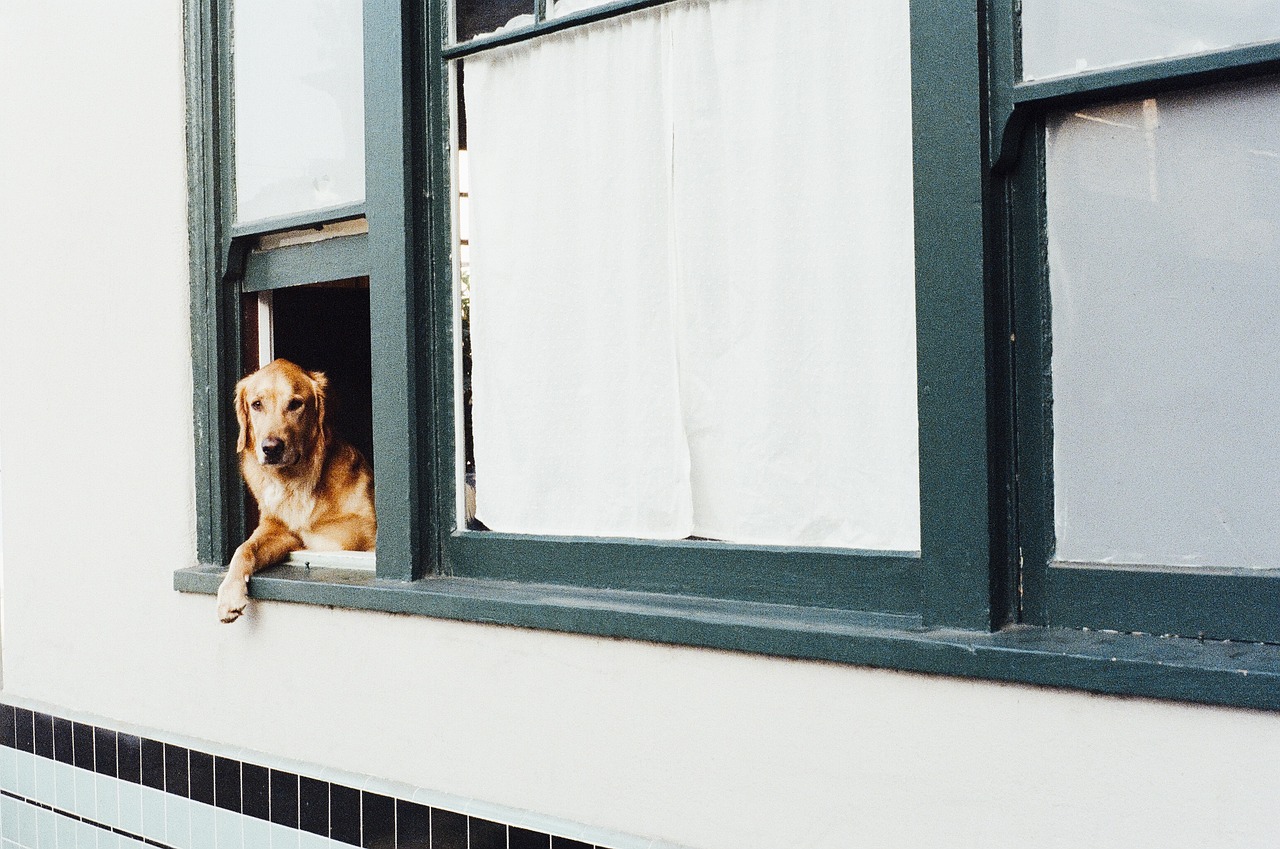Golden Retrievers and Separation Anxiety: Tips for Understanding and Managing
Golden Retrievers: A Loving and Loyal Breed
Golden Retrievers are renowned for their friendly and affectionate nature, making them one of the most popular dog breeds worldwide. If you’re considering adding a Golden Retriever to your family, understanding their characteristics and temperament is essential to ensure a harmonious and fulfilling relationship.
Introduction to Golden Retrievers
Golden Retrievers are medium to large-sized dogs that were originally bred as hunting companions. They have a distinctive golden coat that ranges from light to dark shades of gold. With their friendly demeanor and warm personality, Golden Retrievers are known for being excellent family pets, therapy dogs, and assistance dogs.
These dogs have a reputation for being intelligent, gentle, and eager to please. They thrive on human companionship and are highly sociable with both adults and children. Their friendly nature makes them suitable for various lifestyles, including families, singles, and seniors.
Characteristics and Temperament of Golden Retrievers
The Golden Retriever breed is characterized by its friendly and trustworthy temperament. Here are some key traits that define the nature of Golden Retrievers:
-
Friendly and Outgoing: Golden Retrievers are generally friendly towards strangers and other animals, making them poor guard dogs. Their sociable nature makes them well-suited for households with frequent visitors or multiple pets.
-
Intelligent and Trainable: Golden Retrievers are highly intelligent and eager to learn. They respond well to positive reinforcement training methods, making them a joy to train. Their intelligence also allows them to excel in various activities, including obedience, agility, and therapy work.
-
Loving and Loyal: Golden Retrievers are incredibly loyal and form strong bonds with their owners. They thrive on love and attention, always seeking to please their human companions. Their affectionate nature makes them excellent companions for individuals of all ages.
-
Energetic and Active: Golden Retrievers have a high energy level and require regular exercise to keep them physically and mentally stimulated. Daily walks, playtime, and engaging activities are essential to prevent boredom and promote their overall well-being.
-
Adaptable and Versatile: Golden Retrievers are known for their adaptability and versatility. They can adjust to various living environments, including apartments and homes with yards. They are equally comfortable in urban or rural settings, as long as they receive adequate exercise and mental stimulation.
Understanding the nature of Golden Retrievers is crucial when considering them as a breed. Their friendly and loving temperament, combined with their intelligence and versatility, makes them an excellent choice for individuals and families who are committed to providing the care and attention these dogs require.
For more information on the specific needs and care of Golden Retrievers, be sure to explore our other articles on topics such as golden retrievers and water, essential care tips for golden retriever puppies, and addressing common health concerns in golden retrievers.
Understanding Separation Anxiety in Golden Retrievers
If you are considering bringing a Golden Retriever into your home or already have one, it’s important to understand the potential challenges they may face, including separation anxiety. Separation anxiety is a common condition in dogs, and Golden Retrievers are known to be particularly prone to it.
What is Separation Anxiety?
Separation anxiety is a behavioral disorder characterized by distress and anxiety when a dog is separated from their owner or left alone. Dogs with separation anxiety may exhibit various symptoms, including destructive behavior, excessive barking or howling, pacing, drooling, and even attempting to escape. It’s important to note that these behaviors are not due to disobedience or spite but rather a genuine distress caused by the separation.
Why are Golden Retrievers Prone to Separation Anxiety?
Golden Retrievers are highly sociable and people-oriented dogs. They thrive on human companionship and form strong bonds with their owners. This strong attachment can make them more susceptible to developing separation anxiety when they are left alone.
Additionally, Golden Retrievers are known for their intelligence and eagerness to please, which can make them highly sensitive to changes in their environment or routines. Any disruption to their daily routine, such as a change in schedule or a new living situation, can trigger separation anxiety in these sensitive dogs.
To help manage and alleviate separation anxiety in Golden Retrievers, it’s important to understand the signs and symptoms, as well as implement strategies to provide comfort and support for your furry friend. In the following sections, we will explore the behavioral and physical signs of separation anxiety and provide tips for managing and preventing this condition.
Signs and Symptoms of Separation Anxiety
If you suspect that your Golden Retriever may be experiencing separation anxiety, it’s important to be aware of the signs and symptoms. Separation anxiety can manifest in both behavioral and physical ways. By recognizing these signs, you can better understand your dog’s needs and take appropriate steps to manage their anxiety.
Behavioral Signs
Golden Retrievers with separation anxiety may exhibit various behavioral signs when they are left alone. These signs can include:
-
Excessive barking or howling: Your Golden Retriever may bark or howl excessively when you’re not around. This vocalization is their way of expressing distress and seeking attention.
-
Destructive behavior: Dogs with separation anxiety may engage in destructive behaviors, such as chewing furniture, pillows, or other household items. This behavior often occurs as a result of anxiety and attempts to alleviate stress.
-
Pacing and restlessness: Restlessness is a common behavioral sign of separation anxiety. Your Golden Retriever may constantly pace or wander around the house, unable to settle down in your absence.
-
Attempts to escape: Some dogs with separation anxiety may attempt to escape from the house or the confined area they are in. This behavior can be dangerous and may result in injuries.
-
House soiling: Dogs experiencing separation anxiety may have accidents indoors, even if they are usually well-trained. This behavior is often a result of anxiety and the inability to control their bladder or bowels.
Physical Signs
In addition to behavioral changes, separation anxiety can also manifest in physical signs in Golden Retrievers. These signs may include:
-
Excessive drooling: Dogs with separation anxiety may drool excessively when they are left alone. This can be a result of stress and anxiety.
-
Panting: Panting is a common physical response to anxiety in dogs. Your Golden Retriever may exhibit rapid and shallow breathing when experiencing separation anxiety.
-
Trembling or shaking: Dogs may tremble or shake when they are anxious or stressed. This can be seen in Golden Retrievers with separation anxiety as a physical manifestation of their emotional distress.
-
Loss of appetite: Some dogs may experience a loss of appetite when they are anxious or stressed. If your Golden Retriever consistently refuses food when left alone, it may be a sign of separation anxiety.
It’s important to note that these signs and symptoms can also be indications of other issues or medical conditions. If you suspect that your Golden Retriever is experiencing separation anxiety, it’s recommended to consult with a veterinarian or a professional dog behaviorist for a proper diagnosis and guidance on managing the condition. For more information on addressing common health concerns in Golden Retrievers, refer to our article on addressing common health concerns in golden retrievers.
Managing Separation Anxiety in Golden Retrievers
Separation anxiety can be a challenging issue for golden retrievers and their owners. However, with the right strategies and techniques, it is possible to manage and alleviate this condition. Here are some effective methods to help your golden retriever cope with separation anxiety:
Establishing a Routine
Creating a consistent daily routine is essential for golden retrievers with separation anxiety. Dogs thrive on predictability and structure, so establishing a routine can help them feel more secure and less anxious when left alone. Set regular times for feeding, exercise, play, and rest. Gradually introduce periods of separation into the routine, starting with short durations and gradually increasing the time apart. This gradual exposure can help your golden retriever build tolerance and confidence when alone.
Gradual Desensitization
Desensitization is a technique that involves gradually exposing your golden retriever to situations that trigger anxiety, in this case, being alone. Start by practicing short absences and gradually increase the duration over time. Before leaving, engage in a calming routine that signals it’s time to relax, such as providing a puzzle toy or playing soft music. This can help create a positive association with your departure. It’s important to reward your golden retriever for calm behavior during and after your absence to reinforce positive behavior.
Providing Mental Stimulation
Mental stimulation is crucial for golden retrievers with separation anxiety. Engage your dog’s mind with interactive toys, puzzle feeders, and treat-dispensing toys. These activities can keep them occupied and provide a distraction from their anxiety. Consider freezing a stuffed Kong toy with treats or using interactive toys that require problem-solving. Mental stimulation can help tire your golden retriever out mentally, making them more relaxed and less prone to anxiety when alone.
Seeking Professional Help
If your golden retriever’s separation anxiety persists despite your efforts, seeking professional help from a veterinarian or a certified dog behaviorist may be beneficial. They can provide tailored advice and guidance specific to your dog’s needs. They may recommend behavioral modification techniques, medication, or a combination of both to help manage your golden retriever’s separation anxiety effectively. Remember to consult with professionals who have experience in treating separation anxiety in dogs.
By implementing these strategies and seeking professional guidance when needed, you can help your golden retriever manage their separation anxiety and lead a happier, more balanced life. Remember to be patient and consistent in your approach, as overcoming separation anxiety can take time. With love, understanding, and proper management, you can support your golden retriever through this challenging condition.
Tips for Preventing Separation Anxiety in Golden Retrievers
If you’re considering bringing a Golden Retriever into your home, or if you already have one, it’s important to take proactive steps to prevent separation anxiety. By focusing on early socialization, creating a safe environment, and avoiding excessive time alone, you can help your Golden Retriever adjust to your absence more easily.
Early Socialization and Training
Early socialization plays a vital role in preventing separation anxiety in Golden Retrievers. Expose your puppy to various environments, people, and other animals from a young age. This helps them develop confidence and adaptability, making them more resilient when faced with separation.
Enroll your Golden Retriever in puppy classes or obedience training to provide structured socialization and teach them basic commands. This not only aids in their overall development but also strengthens the bond between you and your furry friend. Training classes also offer opportunities for your Golden Retriever to interact with other dogs, further enhancing their social skills.
For more detailed information on training your Golden Retriever, check out our article on the benefits of training classes for Golden Retrievers.
Creating a Safe and Comfortable Environment
Creating a safe and comfortable environment is crucial for preventing separation anxiety in Golden Retrievers. Designate a specific area where your dog can relax and feel secure when you’re not around. This could be a cozy crate, a comfortable bed, or a designated room with their toys and familiar scents.
Ensure that your Golden Retriever has access to fresh water, appropriate chew toys, and interactive puzzle toys. These toys can provide mental stimulation and help alleviate anxiety during your absence. Consider rotating the toys to keep them engaging and exciting for your furry friend.
To learn more about creating a safe and comfortable environment for your Golden Retriever, check out our article on essential care tips for Golden Retriever puppies.
Avoiding Excessive Time Alone
Golden Retrievers thrive on human companionship and can become anxious when left alone for extended periods. Avoid leaving your Golden Retriever alone for long stretches of time, especially during their puppyhood and adolescent stages. If you have a busy schedule, consider hiring a dog walker or enlisting the help of a trusted friend or family member to check in on your furry friend.
If you anticipate being away for an extended period, gradually acclimate your Golden Retriever to longer periods of alone time. Start by leaving them alone for short intervals and gradually increase the duration. This gradual desensitization helps them learn that being alone is temporary and that you will return.
For more tips on managing separation anxiety, check out our article on addressing common health concerns in Golden Retrievers.
By focusing on early socialization, creating a safe environment, and providing sufficient companionship, you can help prevent separation anxiety in your Golden Retriever. Remember, every dog is unique, so it’s important to tailor your approach to your furry friend’s individual needs. With patience, consistency, and love, you can set your Golden Retriever up for a happy and well-adjusted life.
Exploring Straighteners for Curly Hair
Ceramic Straighteners
Tourmaline Straighteners
Titanium Straighteners
When it comes to straightening curly hair, choosing the right straightener is crucial for achieving the desired results. There are several types of straighteners available in the market, each with their own unique features and benefits. In this section, we will explore three popular options: ceramic straighteners, tourmaline straighteners, and titanium straighteners.
Ceramic Straighteners
Ceramic straighteners are a top choice for individuals with curly hair. These straighteners utilize ceramic plates that heat up quickly and distribute heat evenly across the hair strands. The gentle heat helps to minimize damage and frizz, leaving your hair sleek and smooth.
One of the key advantages of ceramic straighteners is their ability to maintain a consistent temperature, ensuring that your hair is evenly straightened from root to tip. Additionally, the smooth surface of the ceramic plates glides effortlessly through your hair, reducing the chances of snagging or pulling.
To get the most out of your ceramic straightener, it’s important to choose one with adjustable heat settings. This allows you to customize the temperature based on your hair type and minimize the risk of heat damage. Remember to always apply a heat protectant spray before using any heat styling tools to shield your hair from excessive heat exposure. Check out our article on heat protectant for hair straightening for more information.
Tourmaline Straighteners
Tourmaline straighteners are another excellent option for those with curly hair. These straighteners feature plates infused with tourmaline, a semi-precious gemstone known for its ability to emit negative ions. When heated, these ions help to seal the hair cuticles, locking in moisture and reducing frizz.
The tourmaline plates also generate infrared heat, which penetrates the hair shaft without causing excessive damage. This gentle heating process ensures that your hair remains healthy and shiny, even after repeated use of the straightener.
Similar to ceramic straighteners, tourmaline straighteners should also have adjustable heat settings to accommodate different hair types. By selecting the appropriate temperature, you can achieve sleek, straight locks without compromising the health of your curls. For more tips on safely straightening curly hair, check out our article on tips for straightening curly hair.
Titanium Straighteners
For individuals with thick and coarse curly hair, titanium straighteners are often the preferred choice. These straighteners feature plates made from titanium, a lightweight and highly durable metal. Titanium plates heat up quickly and evenly, allowing for efficient straightening of even the most stubborn curls.
One of the main advantages of titanium straighteners is their ability to maintain a stable temperature throughout the styling process. This ensures consistent and long-lasting results, even in humid environments. Additionally, the smooth surface of the titanium plates allows for effortless gliding through the hair, minimizing the risk of damage.
When using a titanium straightener, it’s important to start with a lower temperature setting and gradually increase it if needed. This helps to prevent excessive heat exposure and minimize the risk of hair damage. Don’t forget to use a heat protectant spray before styling to provide an extra layer of protection. If you’re interested in alternative methods for straightening curly hair without heat, check out our article on straightening curly hair without heat.
By exploring the different types of straighteners available, you can choose the one that best suits your curly hair needs. Whether you opt for ceramic, tourmaline, or titanium straighteners, remember to prioritize the health and safety of your hair. Experiment with different techniques, products, and styling methods to achieve the best results while keeping your curls happy and healthy.






